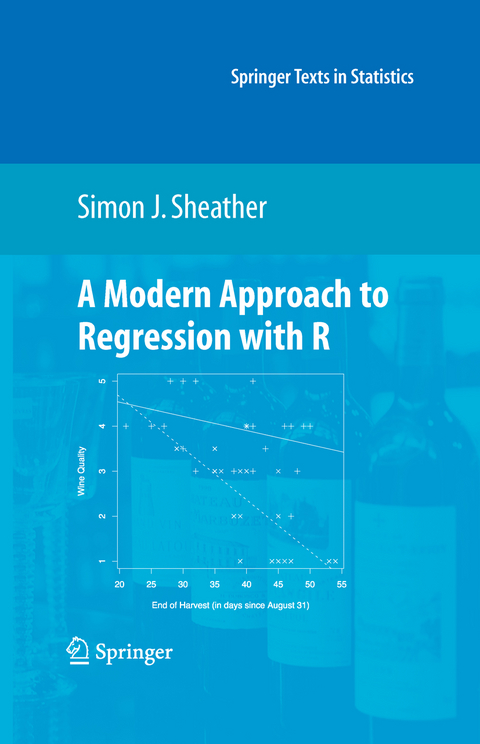
A Modern Approach to Regression with R
Seiten
2010
|
1st ed. Softcover of orig. ed. 2009
Springer-Verlag New York Inc.
978-1-4419-1872-7 (ISBN)
Springer-Verlag New York Inc.
978-1-4419-1872-7 (ISBN)
This book focuses on tools and techniques for building regression models using real-world data and assessing their validity. A key theme throughout the book is that it makes sense to base inferences or conclusions only on valid models. The regression output and plots that appear throughout the book have been gen- ated using R.
This book focuses on tools and techniques for building regression models using real-world data and assessing their validity. A key theme throughout the book is that it makes sense to base inferences or conclusions only on valid models. Plots are shown to be an important tool for both building regression models and assessing their validity. We shall see that deciding what to plot and how each plot should be interpreted will be a major challenge. In order to overcome this challenge we shall need to understand the mathematical properties of the fitted regression models and associated diagnostic procedures. As such this will be an area of focus throughout the book. In particular, we shall carefully study the properties of resi- als in order to understand when patterns in residual plots provide direct information about model misspecification and when they do not. The regression output and plots that appear throughout the book have been gen- ated using R. The output from R that appears in this book has been edited in minor ways. On the book web site you will find the R code used in each example in the text.
This book focuses on tools and techniques for building regression models using real-world data and assessing their validity. A key theme throughout the book is that it makes sense to base inferences or conclusions only on valid models. Plots are shown to be an important tool for both building regression models and assessing their validity. We shall see that deciding what to plot and how each plot should be interpreted will be a major challenge. In order to overcome this challenge we shall need to understand the mathematical properties of the fitted regression models and associated diagnostic procedures. As such this will be an area of focus throughout the book. In particular, we shall carefully study the properties of resi- als in order to understand when patterns in residual plots provide direct information about model misspecification and when they do not. The regression output and plots that appear throughout the book have been gen- ated using R. The output from R that appears in this book has been edited in minor ways. On the book web site you will find the R code used in each example in the text.
Simple Linear Regression.- Diagnostics and Transformations for Simple Linear Regression.- Weighted Least Squares.- Multiple Linear Regression.- Diagnostics and Transformations for Multiple Linear Regression.- Variable Selection.- Logistic Regression.- Serially Correlated Errors.- Mixed Models.
| Erscheint lt. Verlag | 29.11.2010 |
|---|---|
| Reihe/Serie | Springer Texts in Statistics |
| Zusatzinfo | XIV, 393 p. |
| Verlagsort | New York, NY |
| Sprache | englisch |
| Maße | 155 x 235 mm |
| Themenwelt | Mathematik / Informatik ► Mathematik ► Wahrscheinlichkeit / Kombinatorik |
| Wirtschaft ► Volkswirtschaftslehre ► Ökonometrie | |
| ISBN-10 | 1-4419-1872-8 / 1441918728 |
| ISBN-13 | 978-1-4419-1872-7 / 9781441918727 |
| Zustand | Neuware |
| Haben Sie eine Frage zum Produkt? |
Mehr entdecken
aus dem Bereich
aus dem Bereich
Buch | Softcover (2024)
Springer Spektrum (Verlag)
44,99 €
Eine Einführung in die faszinierende Welt des Zufalls
Buch | Softcover (2024)
Springer Spektrum (Verlag)
39,99 €


